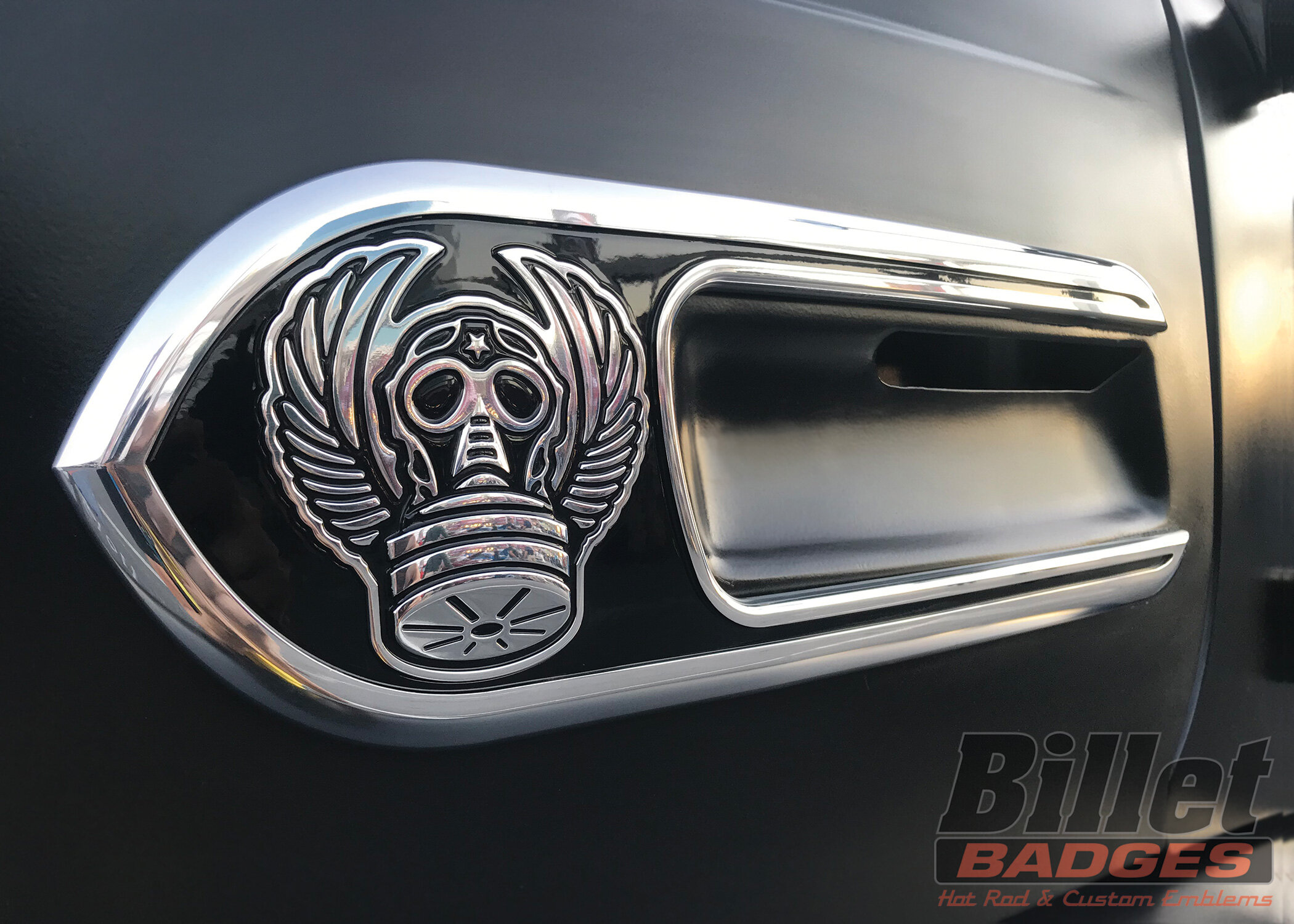Producing a Long-term Impact With Personalized Emblems: Design Tips and Ideas
The development of a custom symbol is a crucial action in developing a brand name's identity, yet lots of overlook the nuances that add to its performance (Custom Emblem). A well-executed design not just communicates core values however additionally resonates with target audiences on several degrees. Concentrating on elements such as color choice, typography, and symbolic value can enhance the emblem's effect. As we discover these critical components, it ends up being clear that there is even more to crafting a symbol than plain aesthetic appeals; recognizing these concepts can change your approach to brand representation. What essential elements should be focused on for maximum result?
Recognizing Your Brand Name Identity
Comprehending your brand identification is critical for producing custom emblems that resonate with your target audience. Your brand identification incorporates the worths, goal, and individuality that specify your organization. It works as the structure for all graphes, including personalized symbols. By clearly articulating what your brand name represents, you can make sure that the design elements of your symbol reflect these core concepts.

Next, recognize essential features of your brand, such as dependability, technology, or originality. These features should assist the layout process, influencing forms, symbols, and typography. A distinct brand name identity not only aids in developing a remarkable emblem however additionally cultivates brand name commitment and recognition. Eventually, an emblem that truly shows your brand identification will produce a meaningful connection with your audience, strengthening your message and boosting your total brand name strategy.
Choosing the Right Colors
Selecting the right colors for your custom emblem plays a pivotal role in conveying your brand's identity and message. Shades stimulate feelings and can dramatically affect understandings, making it vital to select colors that resonate with your target audience. Begin by taking into consideration the emotional influence of shades; as an example, blue typically conveys trust and professionalism, while red can stimulate exhilaration and seriousness.
It is likewise vital to align your color selections with your brand's values and sector. A tech company might go with awesome colors, such as greens and blues, to show development and reliability, whereas an imaginative company might accept bold and lively colors to display imagination and power.
Furthermore, consider the shade harmony in your style. Utilizing a shade wheel can help you recognize complementary or similar colors that develop visual equilibrium. Aim for an optimum of three primary shades to preserve simplicity and memorability.
Typography and Typeface Selection
An appropriate font can dramatically enhance the effect of your custom emblem, making typography and font style option vital parts of the style procedure. The typeface should line up with the brand name's identity, communicating the suitable tone and message. A modern sans-serif font style might stimulate a feeling of development and simplicity, while a traditional serif typeface can communicate tradition and integrity.
When picking a typeface, consider legibility and scalability. Your emblem will certainly be made use of throughout numerous media, from calling card to billboards, so the font must remain clear at any size. In addition, stay clear of extremely attractive font styles that may detract from the overall layout and message.
Combining fonts can also develop aesthetic interest but requires careful pairing. Custom Emblem. An usual strategy is to utilize a strong typeface for the main text and a check complementary lighter one for additional elements. Consistency is essential; limit your option to two or 3 font styles to keep a cohesive look
Incorporating Significant Symbols

For example, a tree might stand for growth and stability, while a gear may signify technology and accuracy. The secret is to make certain that the icons resonate with your target audience and mirror your brand name's goal. Engage in conceptualizing sessions to gather and discover numerous concepts input from diverse stakeholders, as this can produce a richer range of alternatives.
When you have actually identified possible signs, check their effectiveness by sharing them with an emphasis group or carrying out studies. This feedback can give understandings right into how well the icons communicate your designated message. Additionally, think about just how these symbols will function in conjunction with other style aspects, such as colors and typography, to produce a cohesive and impactful symbol. Eventually, the ideal signs can boost acknowledgment and cultivate a more powerful psychological connection with your audience, making your brand unforgettable and purposeful.
Ensuring Adaptability and Scalability
Ensuring that your custom-made symbol is scalable and flexible is essential for its performance throughout different applications and tools. A well-designed emblem ought to preserve its honesty and aesthetic appeal whether it's displayed on a calling card, a site, or a big banner. To achieve this, concentrate on developing a style that is basic yet impactful, avoiding complex information that might become shed at smaller sized dimensions.

Testing your emblem in different formats and sizes is crucial. Evaluate exactly how it carries out on various backgrounds and in various environments to guarantee it continues to be recognizable and reliable. By focusing on adaptability and scalability in your design process, you will certainly develop a symbol that stands the examination of time and properly represents your brand throughout all touchpoints.

Conclusion
In verdict, the creation of custom symbols necessitates a tactical approach that balances various style aspects, consisting of brand name identity, shade selection, typography, and symbolic depiction. Highlighting simplicity and scalability guarantees that the emblem continues to be versatile throughout various applications, while purposeful icons improve emotional resonance with the audience. By diligently incorporating these parts, brand names can grow a distinctive identity that cultivates recognition and leaves a long-term impact on consumers.
A well-defined brand name identification not only aids in developing a remarkable symbol yet also cultivates brand commitment and recognition. Eventually, an emblem that truly reflects your brand name identity will produce a purposeful connection with your target market, enhancing your message and improving your overall brand name technique.
Picking the right colors for your personalized symbol plays a critical function in conveying your brand name's identity and message. By prioritizing adaptability and scalability in your design procedure, you will produce an emblem that stands the test of time and efficiently represents your brand throughout all touchpoints.
In final thought, the creation of custom-made symbols demands a critical strategy that balances various design elements, consisting of brand identification, shade choice, typography, and symbolic representation.